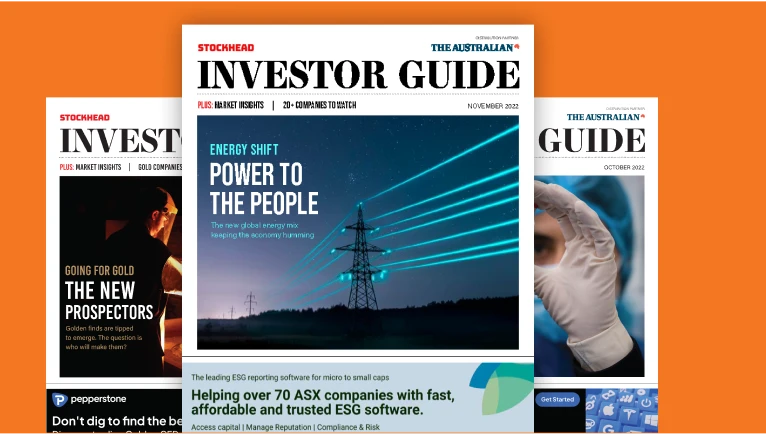Head to Head: How do advanced ASX lithium stocks stack up against their TSX-listed peers?

Pic: Oleksii Liskonih, iStock / Getty Images Plus
Companies on the Toronto Stock Exchange (TSX) usually don’t get much of a mention on Stockhead.
But, like the ASX, the Canadian bourse is a fertile breeding ground for exploration and mining stocks.
Here, lucrative small to mid-cap lithium M&S activity has been flying thick and fast, with three advanced stocks – Neo, Millennium and Arena – selling for a collective CAD$1.75bn over the past year and a half.
Meanwhile, Canada itself has become a hotspot for global explorers, who are increasingly pivoting to North America in the hope of taking part in a burgeoning US-led supply chain for battery materials.
So, how do your favourite advanced ASX lithium stocks — companies like Liontown (ASX:LTR), Lake Resources (ASX:LKE), Vulcan (ASX:VUL), Galan (ASX:GLN), Global Lithium (ASX:GL1) and Argosy (ASX:AGY) — compare to their TSX-listed peers?
Are they undervalued? Overvalued? We’ll leave that for you to decide.
Can you invest in TSX shares? Of course – Eddy Sunarto has all you need to know about that here.
To help understand how advanced these stocks are there are generally three types of studies, listed from early stage to most advanced: Scoping, pre-feasibility, and feasibility/ bankable feasibility.
The TSX equivalent of a scoping study is the Preliminary Economic Assessment (PEA).
LITHIUM AMERICAS CORP
Market Cap: CAD$4.4bn
1 Year Share Price Return: -6%
How Advanced? CONSTRUCTION PENDING
Lithium Americas has two development-ready projects, Thacker Pass in Nevada and Caucharí-Olaroz in Argentina.
The company now has all permits in place to start production at the 16.1Mt LCE Thacker Pass clay lithium project, the US’ largest resource.
Extracting lithium from large clay deposits has never been done at a commercial scale, which makes this project an important one for similar stocks like Arizona Lithium (ASX:AZL).
Phase 1 construction, which has a US$2.3bn price tag attached, is due to kick off this year, ahead of first production in 2026.
Phase 1 production of 40,000tpa LCE will ramp up to 80,000tpa in Phase 2.
All up, the monster 40-year project will boast average annual EBITDA of US$1.1bn at OPEX of US$6743/t.
In February, Detroit automaker General Motors (GM) poured US$650m into Lithium Americas to become its largest shareholder and major offtake partner.
This is the largest ever investment by an automaker in battery raw materials production, so far.
SIGMA LITHIUM
Market Cap: CAD$5.2bn
1 Year Share Price Return: 240%
How Advanced? UNDER CONSTRUCTION
The other big boy of TSX lithium is building its Grota do Cirilo hard rock project in Brazil, with first production on track for April this year.
Phase 1 will produce 270,000 tonnes (36,700 LCE) each year.
Phase 2 & 3 of the project are expected to increase production to 766,000 tonnes annually (or 104,200 LCE) of concentrate in a state-of-the-art lithium plant that uses 100% renewable energy, 100% recycled water and 100% dry-stacked tailings.
Sigma hit headlines recently on rumours that EV maker Tesla was mulling a takeover.
According to Bloomberg, Tesla had been speaking with potential advisers about a bid for Sigma, one of the companies the EV maker was exploring as it considers its own refining.
STANDARD LITHIUM
Market Cap: CAD$988m
1 Year Return: -25%
How advanced? DFS UNDERWAY
The former petroleum company has been in lithium since 2016, and now owns a couple of the most advanced brines projects in the US.
SLI has two flagship assets in Arkansas, Lanxess and South West Arkansas, where it is targeting combined production of +50,000tpa LCE.
Most advanced is the 3.14Mt LCE Lanxess JV, where a Definitive Feasibility Study (DFS) for the first commercial plant, Phase 1A, is targeted for completion the first half of 2023.
An early-stage study released in 2019 envisaged 20,900t LCE annual production over an initial 25 years, with total capex over the three phases estimated at ~$440m.
Costs would reduce as more capacity is added, with overall OPEX estimated at US$4319/t.
Costs have inflated since then, but so have lithium prices.
Assuming a price US$13,550/t LCE – it currently sits above UU$60,000/t – SLI calculated a post-tax net present value of US$989m and post-tax internal rate of return (IRR) of 36%.
At the 1.95Mt South West Arkansas, ~40km away, a Pre-Feasibility Study (PFS) is targeted for completion during the first half of 2023 with a DFS to commence shortly thereafter.
SLI had cash on hand of $107m and a working capital surplus of $105m at the end of December.
AMERICAN LITHIUM
Market Cap: CAD$840m
1 Year Return: 20%
How Advanced? PFS UNDERWAY
The company started in lithium in 2016 and now has two projects on the development path: Tonopah Lithium (TLC) in Nevada and Falchani in Peru.
TLC is large 9.8Mt near surface clay deposit, where a recent early-stage study envisaged 38,000tpa LCE production over a 40-year mine life.
Using a long term LCE price of US$20,000/t, American Lithium estimates NPV8 of US$3.64bn, IRR 27.5%, and 3.8-years payback.
OPEX would be ~$7,443/t, and it would cost US$819m to build.
However, with 1.7Mtpa of magnesium by-product sales, OPEX would drop as low as US$817/t.
Next step includes building a pilot plant and commencing a PFS.
The company claims Falchani is the 6th largest hard rock lithium project in the world, with a resource of 320Mt at ~0.28% for 4.8Mt contained lithium.
That’s very low grade for a hard rock lithium deposit, which usually grade between 0.8-1.5%. And yet the company reckons OPEX would be a super low ~$3,958/t.
An early-stage study envisages a 33-year mine life, with an initial 23,000tpa LCE production rate ramping up to 85,000tpa in year 13. It would cost US$587m to build.
A PFS is underway.
LITHIUM IONIC CORP
Market Cap: CAD$330m
1 Year Return: 180%
How Advanced? EXPLORATION STAGE
Lithium Ionic listed on the TSX May last year with its flagship Itinga in the state of Minas Gerais, Brazil, close to near-term lithium producer Sigma Lithium and Latin Resources’ (ASX:LRS) Salinas project.
A monster eight-rig, 30,000m drilling campaign is underway with a maiden resource due in the first half of the year.
The initial goal, Lithium Ionic says, is a substantial 20Mt at ~1.5%.
FRONTIER LITHIUM
Market Cap: CAD$605m
1 Year Return: -5%
How Advanced? PFS UNDERWAY
Frontier has some of the highest grade spodumene in the world at its PAK project in Ontario, which the company compares to the famous hard rock Greenbushes mine in WA.
Recent drilling at the Spark target pulled up an astounding 398.25m of pegmatite averaging 1.88% Li2O, including a 23.4m zone of 3.12% Li2O.
Following a resource upgrade the project now hosts ~56Mt at ~1.5% lithium across two pegmatites, PAK and Spark.
A high-grade zone at PAK consists of 657,000t at 3.59%.
Both deposits remain open while another two earlier stage discoveries, Bolt and Pennock, will no doubt boost the resource even further.
An early-stage study in 2021 envisaged an integrated open pit mining and chemicals operation producing 23,174tpa lithium hydroxide over a 26-year project life.
At a low US$13,500/t hydroxide selling price, Frontier expects to rake in US$8.52bn revenues over life of mine and ~US$225m EBITDA annually.
The project would cost US$685m to build, which includes 25% contingency.
A PFS is due out this/next quarter, with the company aiming for first ‘technical grade’ spodumene concentrate production in Q3, 2026.
CRITICAL ELEMENTS LITHIUM
Market Cap: CAD$629m
1 Year Return: 120%
How Advanced? FINANCING AND OFFTAKE
Another advanced hard rock play, this time based in the popular Canadian jurisdiction of Quebec.
Its low impurity Rose project contains resources and reserves of ~58Mt grading 0.95% lithium.
25,000m of drilling is underway to grow the resource further.
The initial plan is to produce a spod concentrate, before heading downstream in hydroxide production.
A 2022 Feasibility Study envisaged annual production of ~51,000t ‘technical’ grade spod (6%), ~173,000tpa ‘chemical’ grade spod (5.5%) and 441t tantalum over a 17-year mine life.
At prices of ~US$1,852/t for the chemical grade concentrate and OPEX of US$590/t, Critical Elements expects average annual EBITDA of US$379m.
The Initial CAPEX of US$357m will take 1.4 years to pay off, it says.
First production is pencilled in for 2025.
Related Topics

UNLOCK INSIGHTS
Discover the untold stories of emerging ASX stocks.
Daily news and expert analysis, it's free to subscribe.
By proceeding, you confirm you understand that we handle personal information in accordance with our Privacy Policy.








